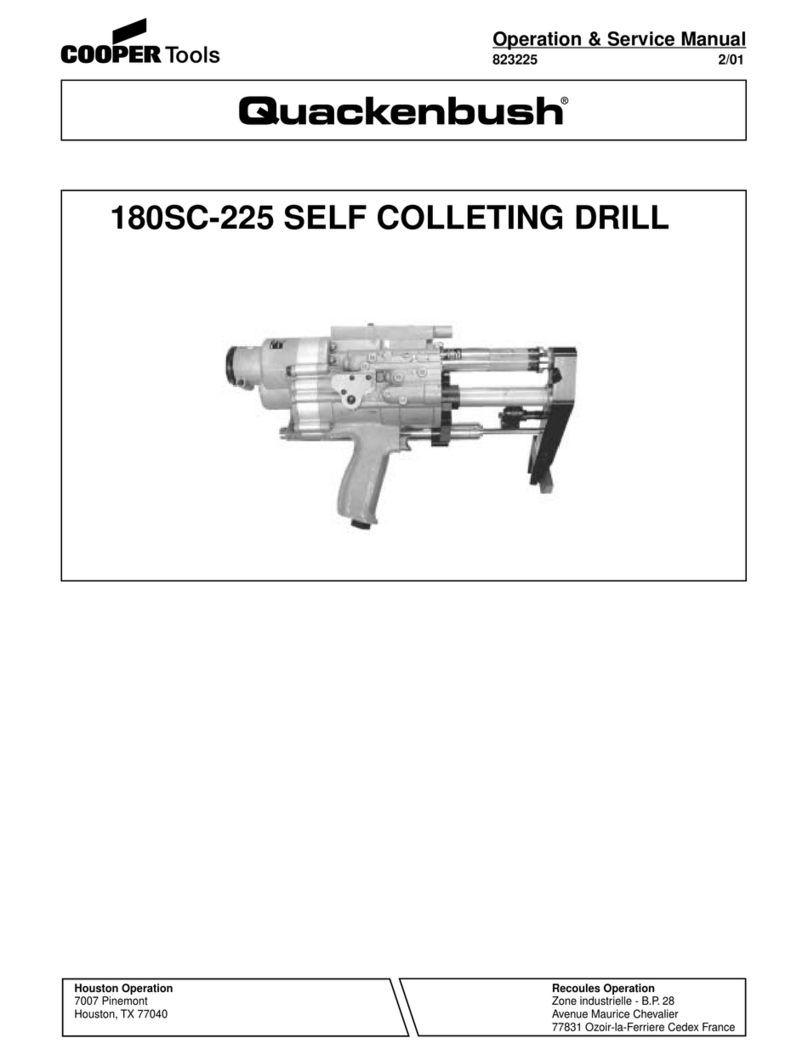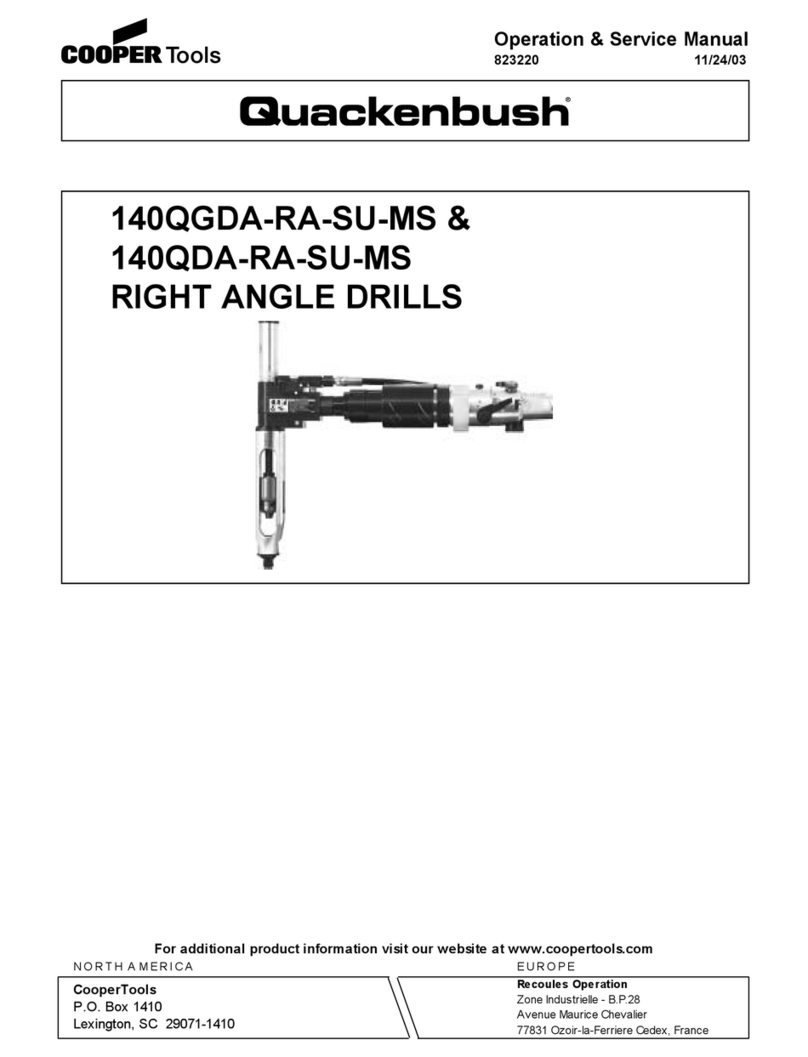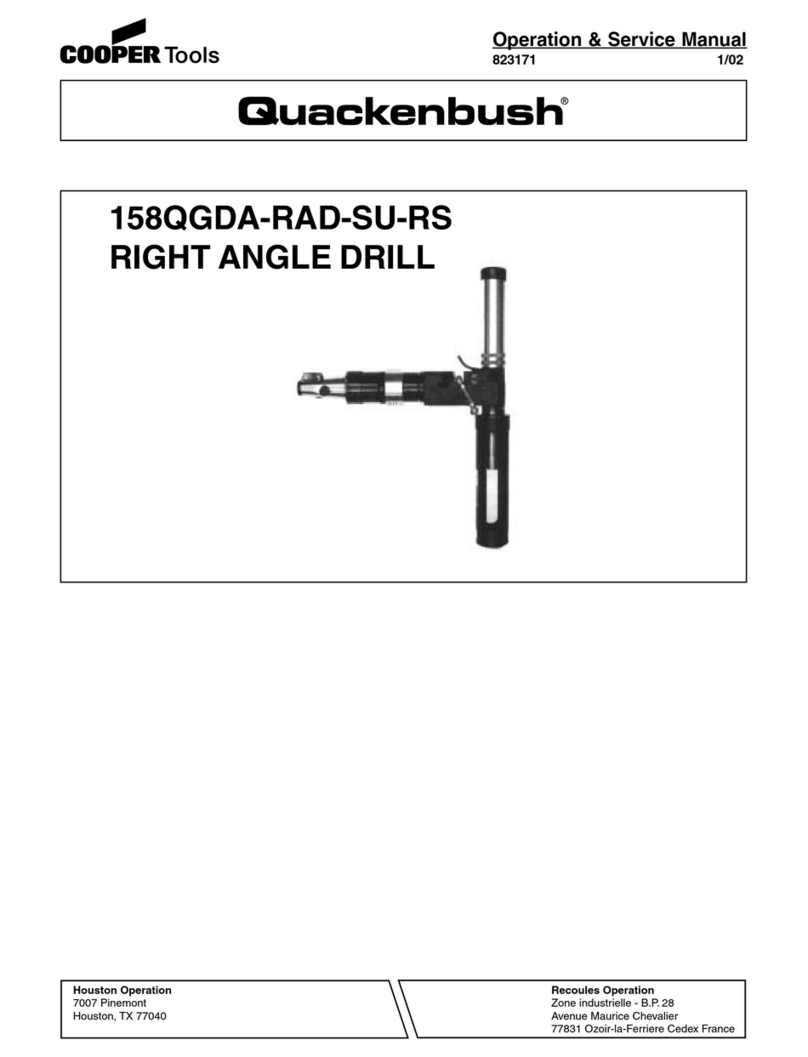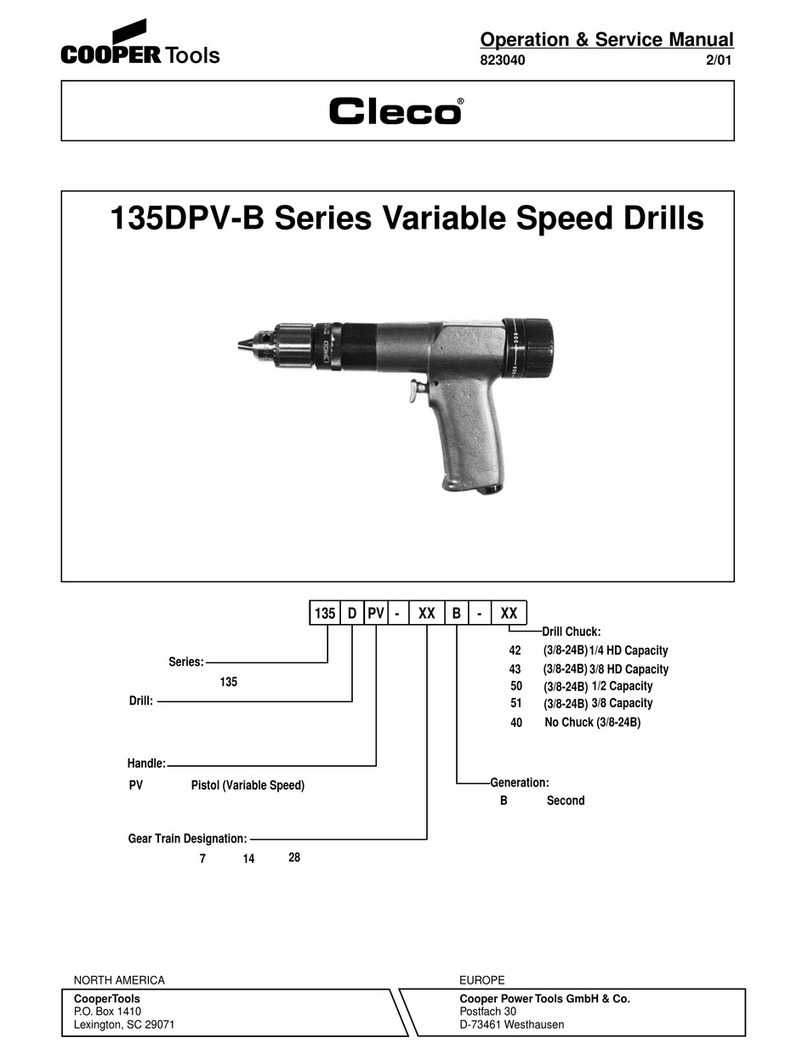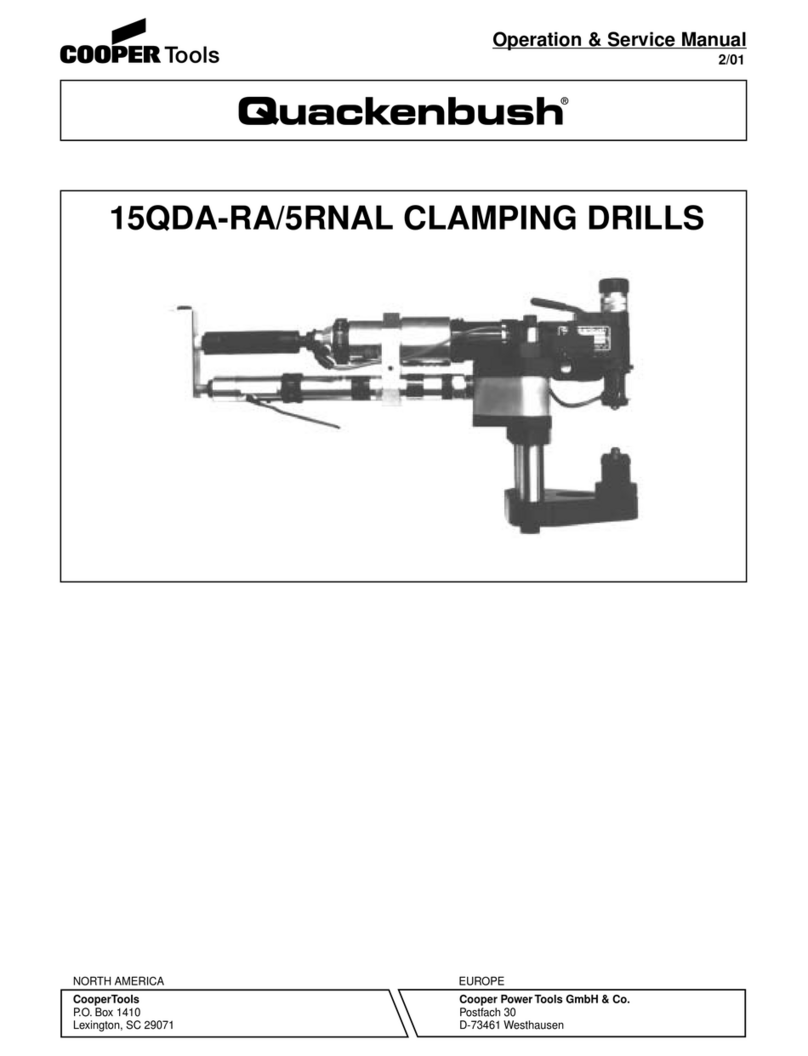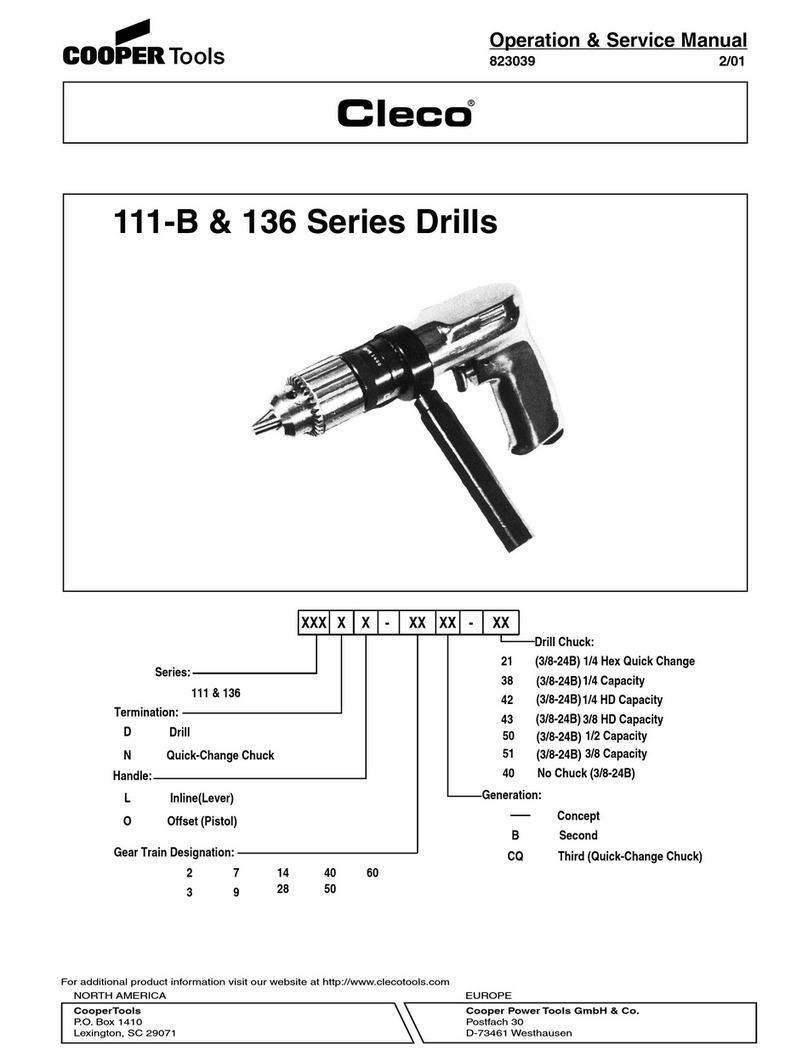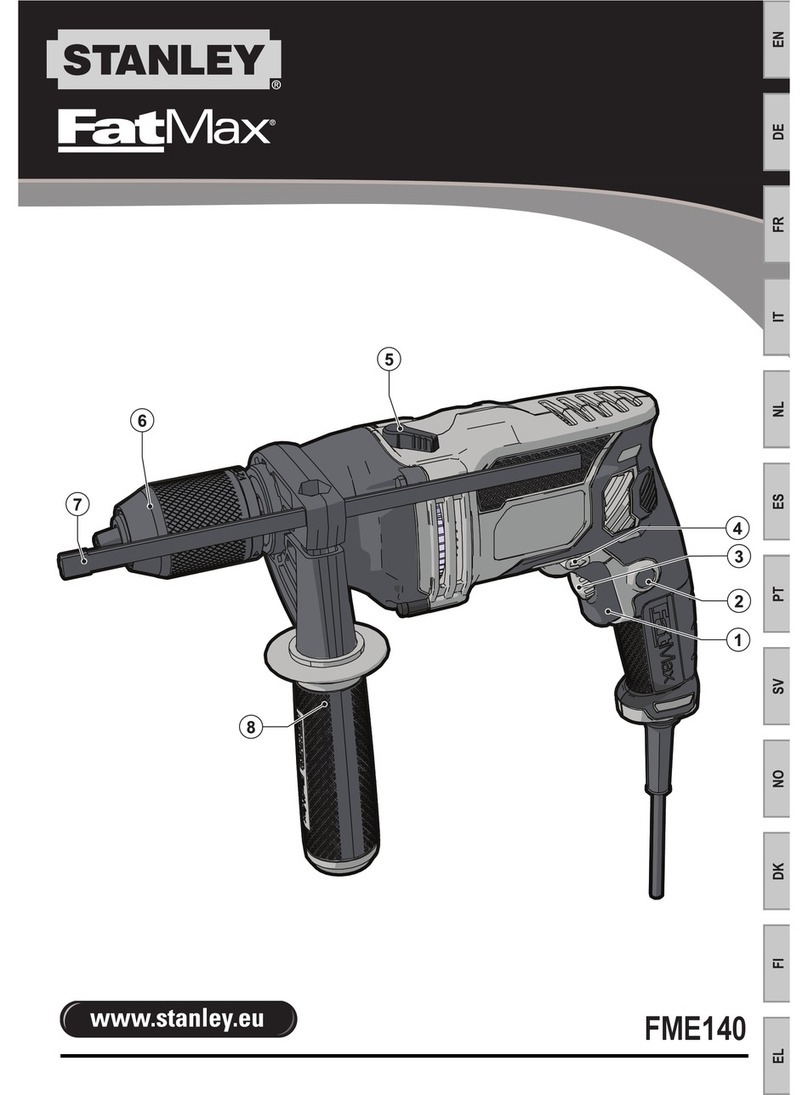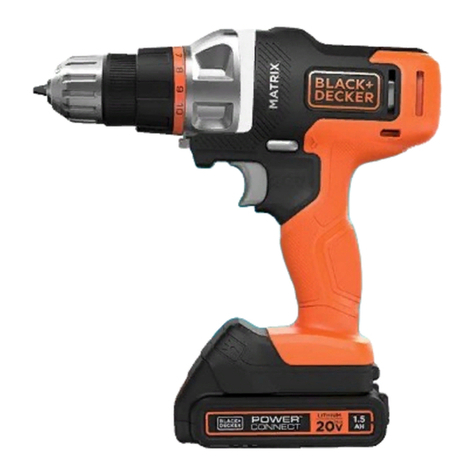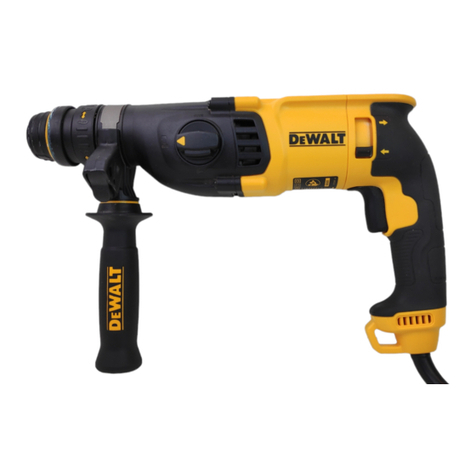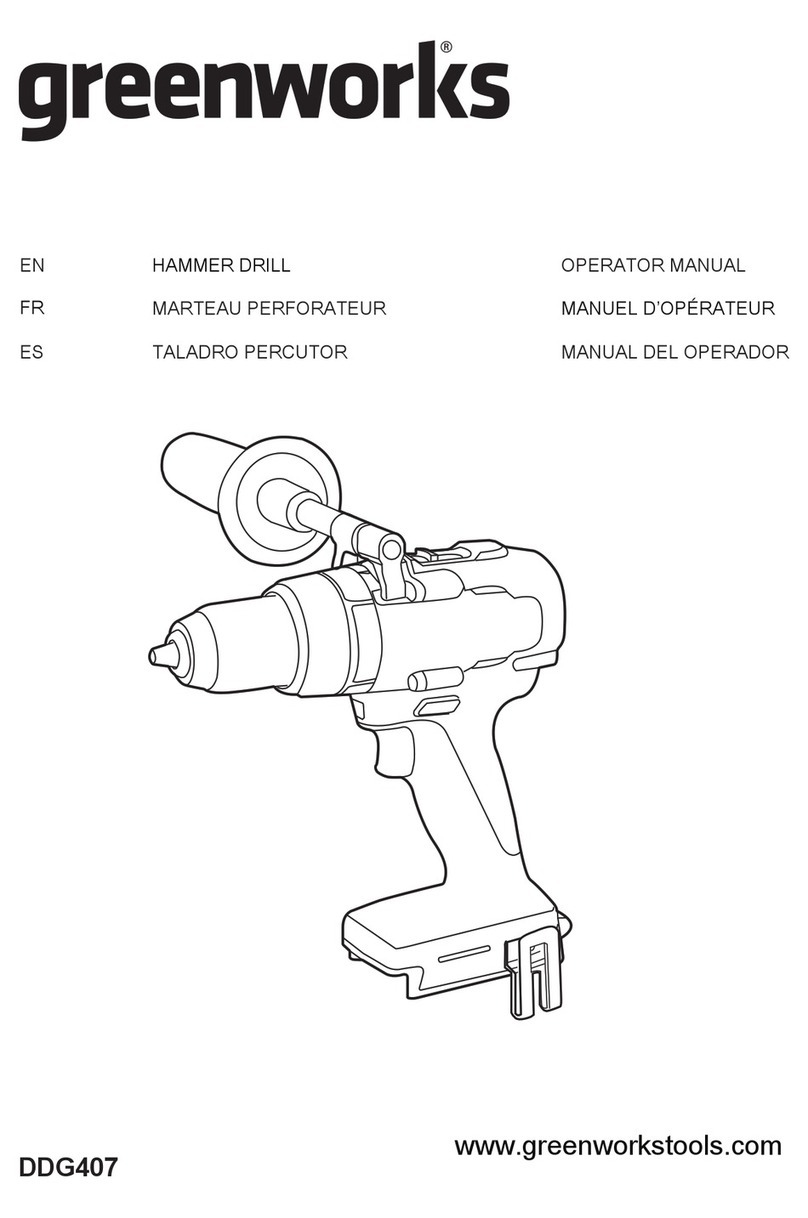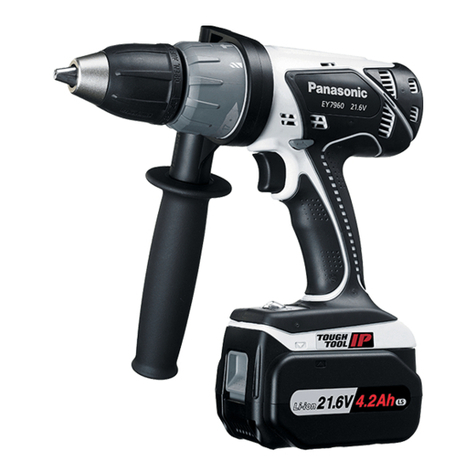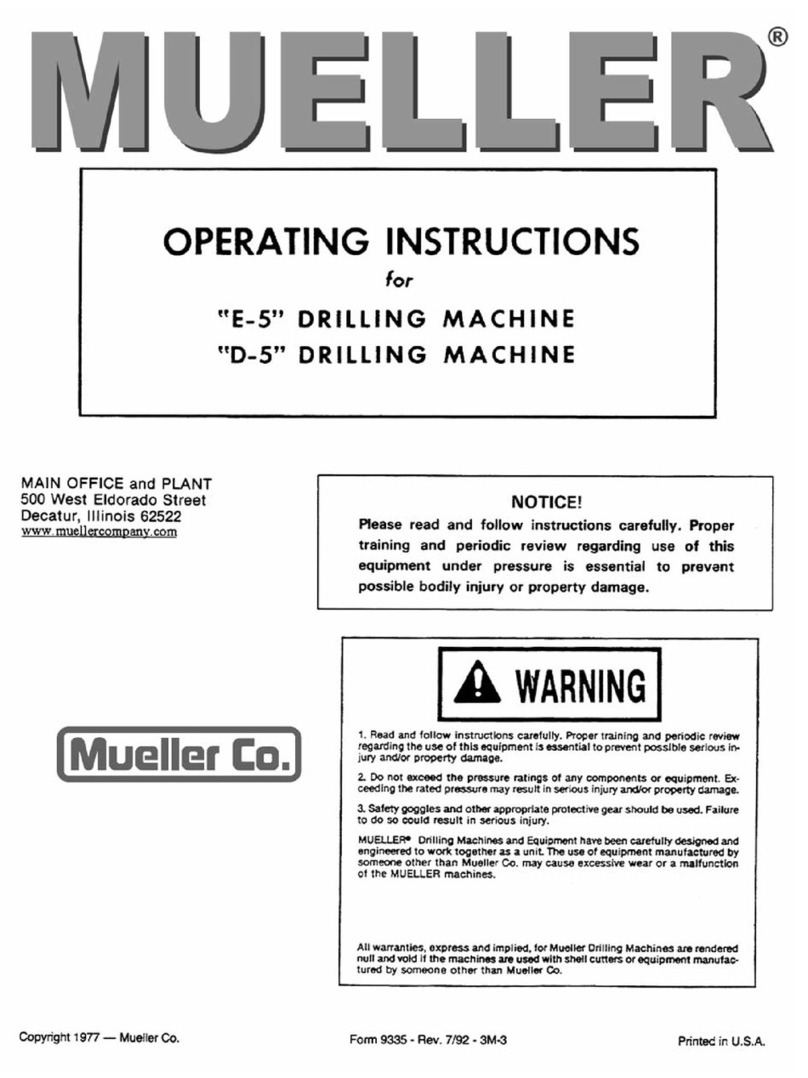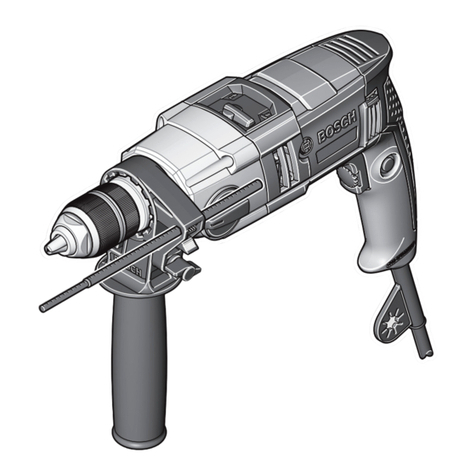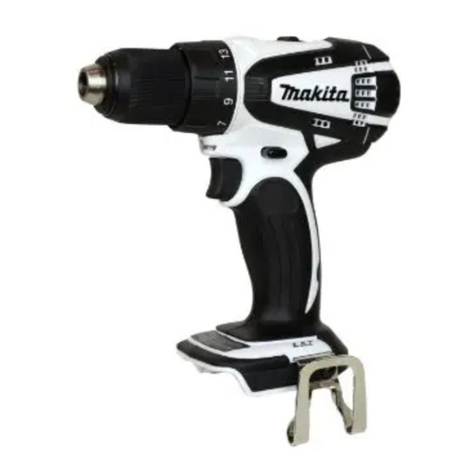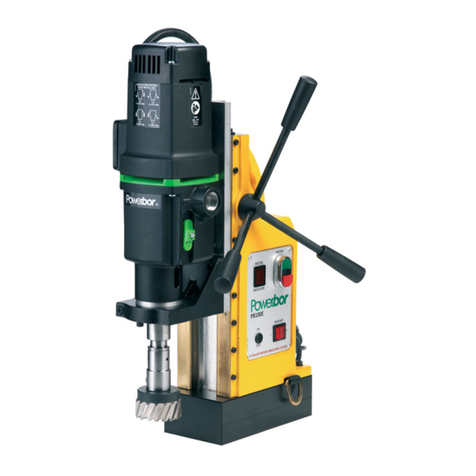
5
The 120SC-112 drill is an air operated, hydraulically con-
trolledtoolthatautomaticallyclampstothematerial,drillsand
countersinks close tolerance holes in one operation.
The120SC-112 will producehigh qualityholes in aluminum,
steel,titaniumandcompositematerialsprimarilyfoundinthe
aircraft/aerospace industries. The 120SC-112 has been de-
signed using state-of-the-art technology that provides maxi-
mum power, minimum weight and the highest degree of
accuracy for demanding hole preparation requirements.
Technical Data
FeedStroke: Feedstroke of the120SC-112 is1.1inchesto
drill and countersink in 1 inch stacked material. The feed
stroke is unaffected by the collet stroke.
Collet Stroke: The 120SC-112 will clamp throughout its .5
inch stroke. Collet stroke is unaffected by feed stroke.
SpindleAdjustment: Thespindleadjustmentof.375inch
allows for drill length variations. See Spindle Adjustment
information on page 24.
CountersinkDepthControl:Amicrometeradjustmentpro-
vides for countersink stop repeatability within .001 inch.
CutterSizes:The120SC-112willaccommodate.375diam-
eter drills without countersink and .328 diameter drills with
.625 countersink diameter.
FeedRate: Anadjustable drillfeedratemechanismenables
the 120SC-112 to drill from 5 seconds per inch to 1 minute
perinch.SeeFeedRateAdjustmentinformationonpage22.
Cutter to Collet Spacing: The cutter to collet distance is
adjustable between .875 inch minimum to 3.50 inch maxi-
mum.
Coolant: The 120SC-112 has a drill point coolant port in the
pressure foot. A coolant mist generator is available. (See
Accessories Page 36)
Air Motor: The air motor develops 1.2 horsepower when
supplied with air at 90 p.s.i.
Air Consumption: Air consumption of the 120SC-112 is 45
c.f.m. at 90 p.s.i. dynamic.
Introduction and General Information
Weight: Tool weight with the steel pressure foot is 12
pounds.
Spindle Speeds: Ten geared spindle speeds are available:
270, 470, 700, 900, 1150, 2200,3500, 5500, 7000,14,000 &
23,500 RPM. See pages 33 and 34 for gear set assembly.
Configurations. Any gear set can be used with the 120SC-
112toolTriggerLock:Atriggerlockisprovidedwhichallows
the tool to be locked in the "Operate" position. With the lock
activated,thetoolwillrunthroughtheclamp,feedandretract
cycles,butitwillnotunclamporstopthemotoruntilthetrigger
lock is manually released.
Tool Start-Up
The 120SC-112 is shipped from the factory equipped to the
customer's specifications: spindle RPM, spindle to accom-
modatecuttertypedesired,pressurefoottype,colletguideto
accommodate collet desired, and optional booster pump (if
required).
Afterunpacking,examinethecustomer-specifiedequipment
on the 120SC-112 tool to verify type and speed of compo-
nents.
Attachairlineto3/8-18NPTinletbushing.Ifquickdisconnect
fittings are used, 3/8 in. ID are minimum. The 120SC-112
requiresa supply ofclean 90-100PSIair. Airconsumption is
45CFMat90PSI.Theuseofthein-linelubricatorwillprovide
the proper lubrication for the air motor and will significantly
increase the tool life expectancy.
BecauseO-ringsareextensivelyusedtosealsystemswithin
the tool, the elimination of foreign particles and other con-
taminantswillreducethepossibilityofdamagetotheseparts.
Always inspect O-rings for damage or wear and replace as
required. The use of silicone O-ring lubricant is strongly
recommended during reassembly. The addition of oil in the
air line will also increase motor and valve life as well as the
life of the O-rings. Avoid the use of synthetic lubricants to
prevent damage to O-rings and seals.
WEIGHT
AIR CONSUMPTION
HORSE POWER
O/A LENGTH
STROKE
COLLET STROKE
COUNTERSINK
FEED RATE
SPINDLE SPEEDS
DRILLING THRUST
CLAMP FORCE
(W ASSIST SPRING)
(W ASSIST SPRING)
(W/O ASSIST SPRING)
SPINDLE ADJUSTMENT
MAX. DRILL SIZES
COLLET FOOT SPACING
SPINDLE
COOLANT
120SC-112 SELF-COLLETING DRILL SPECIFICATIONS
12 LBS. MAX. W/STEEL FOOT
45 C.F M. @ 90 P.S.I. DYNAMIC
APPROX.1.2 @ 90 P.S.I.
13.04 IN. MAX WITH SPINDLE ADJUST AT FULL EXTENSION
1.1 IN. (DRILL &C/SINK 1 IN. STACK)
.5 IN. (NO LOSS OF FEED STROKE)
COUNTERSINK STOP REPEATS WITHIN .001 IN.
MIN. 5 SEC. PER INCH & MAX. 1 MIN. PER INCH
270, 470, 700, 900, 1150, 2200,3500, 5500, 7000,14,000 & 23,500 RPM
234 LBS. MAX. (UNREGULATED AIR)
548 LBS. START CLAMP STROKE (UNREGULATED AIR)
460 LBS. FULL CLAMP STROKE (UNREGULATED AIR)
290 LBS. (UNREGULATED AIR)
.375 IN. ADJUSTMENT TO ALLOW FOR DRILL LENGTH VARIATIONS
.375 (NO C/SINK), .328 (.625 C/SINK DIA.)
.875 IN. MIN.—3.50 IN. MAX.
.500 IN. DIA: TUBE W/1/4-28 & 3/8-16 IN. THD. FOR l.D.
THREAD TYPE DRILLS OR 1/4-28 TAPER-LOK TYPE DRILLS.
AIR BLAST PORT & DRILL POINT PORT IN TEMPLATE STD.,
COOLANT MIST GENERATOR AVAILABLE.
